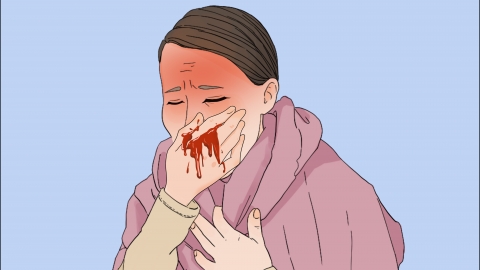What color is gastric bleeding?
Generally, the color of gastric bleeding varies depending on the bleeding site, volume, and the time blood remains in the gastrointestinal tract. Common colors include bright red, dark red, tarry black, coffee-ground, pink frothy, and others. Detailed explanations are as follows:
1. Bright Red
Bright red blood typically appears during acute and massive gastric bleeding. If the bleeding originates near the esophagus or upper part of the stomach, with a large volume and fast flow rate, the blood does not remain in the gastrointestinal tract and is vomited directly through the mouth, appearing bright red. This indicates urgent bleeding, as the blood has not fully reacted with gastric acid or mixed with gastrointestinal contents, requiring immediate medical attention.

2. Dark Red
Dark red blood is usually caused by bleeding within the stomach, with a short retention time. Once blood enters the stomach, it reacts with small amounts of gastric acid, causing red blood cells to rupture and hemoglobin structure to change, shifting the color from bright red to dark red. If the bleeding volume is moderate and the blood is not completely digested, it may appear dark red when vomited, sometimes mixed with small blood clots, indicating ongoing bleeding and requiring close monitoring of the condition.
3. Tarry Black
Tarry black is commonly seen in chronic gastric bleeding or cases with minimal blood loss. Blood remains in the gastrointestinal tract for a longer duration, allowing hemoglobin to react fully with gastric acid and intestinal bacteria, forming black ferrous sulfide. When mixed with feces, this results in black, shiny, and sticky stools resembling tar. This color indicates slow bleeding and complete digestion of blood, requiring stool examination to further identify the cause of bleeding.
4. Coffee-Ground
Coffee-ground appearance is usually the result of blood reacting with gastric acid after gastric bleeding. When blood remains in the stomach for some time, hemoglobin is broken down by gastric acid into brownish acidified methemoglobin, which appears coffee-ground-like when expelled through vomiting, resembling coffee residue. This indicates relatively minor bleeding with a slower rate, and chemical changes having occurred in the stomach. Additional tests are necessary to determine the bleeding site.
5. Pink Frothy
Pink frothy material often appears during vomiting, typically caused by gastric bleeding mixed with large amounts of gas or gastric fluid. When blood mixes thoroughly with gas and liquid in the stomach, it forms a pink frothy substance expelled during vomiting. This situation may be associated with gastric mucosal tear caused by severe vomiting, necessitating attention to accompanying symptoms such as abdominal pain and frequency of vomiting to promptly identify the underlying cause.
In addition, gastric bleeding may also present as dark red stools or blackish-brown vomitus. When abnormal colors associated with gastric bleeding are observed, it is crucial to stop eating immediately, remain calm, and seek hospital treatment promptly to avoid delayed treatment.







